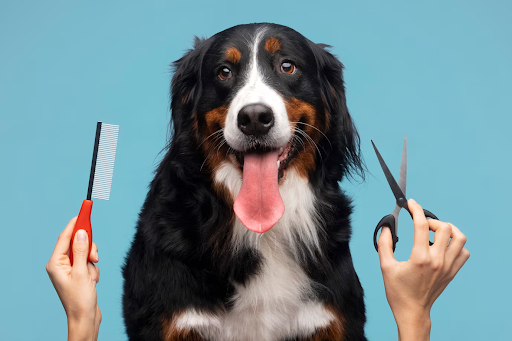Making sure your dog is clean and well-maintained is crucial for several reasons. In fact, professional grooming plays a pivotal role in ensuring your dog's comfort and health. But the question is, “How often should a professional groomer handle your dog’s grooming?” The frequency of professional visits depends highly on your dog’s breed and needs.
Throughout this article, we will explore different grooming requirements for various types of dogs. We’ll guide you on how often to schedule appointments with professionals and ensure your pet stays healthy, clean, and comfortable.
Importance of Regular Grooming of Your Dog
Regular grooming is critical for dogs as it helps with:
1. Frequent grooming helps maintain a healthy coat and skin by removing dirt, debris, and loose fur, which can prevent matting and irritation.
2. It allows for early detection of potential health issues needing veterinary attention, such as cuts, sores, or lumps.
3. Grooming also contributes to overall comfort and well-being by preventing discomfort and itching, and it helps your dog feel good and look their best.
Benefits of Professional Grooming
Professional grooming is beneficial for multiple reasons. The primary ones include the following:
1. Expert care and attention. Professional groomers have the expertise to handle different coat types and adjust to dog grooming needs.
2. Thorough cleaning and de-shedding. A professional groomer can perform de-shedding treatments for dogs with heavy shedding to minimize hair all over the house.
3. Less stress for the dog. A professional groomer is more confident in what they are doing; thus, the dog won't sense their stress and becomes stressed,d which might not be the case if you groom the dog yourself at home. Also, groomers have specialized equipment and a calm, controlled environment that can help alleviate stress.
Finally, professional grooming benefits your dog as groomers can provide highly tailored services to meet your dog’s specific needs.
For example, if your dog requires a particular cut based on how the breed standard looks, a simple batch, or accommodation for specific needs, a professional can handle it all gracefully.
Factors to Consider Regarding Grooming Frequency
The frequency of professional grooming depends on various factors, such as the type of coat, length of the hair, breed, and so on.
Long Haired Breeds
Long-haired breeds (e.g., Golden Retrievers, Shih Tzus, and Afghan Hounds) need more frequent grooming. The longer fur can quickly become tangled or matted if not regularly brushed.
For long-haired breeds, you should consider grooming every 4-6 weeks. It will help prevent matting and ensure the coat remains healthy and debris-free. Daily brushing is ideal for managing tangles and removing loose hair between professional grooming sessions. It will also help to keep the coat looking neat and well-maintained.
Double Coated Breeds
The situation with double-coated breeds is a bit more complicated. Breeds with double coats, such as Siberian Huskies, Alaskan Malamutes, and Labrador Retrievers, have both a soft undercoat and a longer topcoat. These coats have a heavy shedding tendency.
Regular grooming every 6-8 weeks can help manage shedding and maintain the health of both the undercoat and the topcoat. However, depending on the season and the heaviness of shedding, you may need more frequent visits.
Also, make sure to brush your dogs daily to prevent mats and keep the coat clean.
Short Haired Breeds
Short-haired breeds like Beagles, Boxers, and Dalmatians have coats that require less frequent grooming. Thus, these breeds are a bit easier to maintain. In fact, a grooming session every 8 to 12 weeks is usually sufficient to maintain coat health.
During these sessions, baths can help remove dirt and oils, while nail trimming, ear cleaning, and teeth brushing can also be attended to. Short-haired breeds still benefit from regular brushing to manage shedding and stimulate blood circulation.
Puppies
When it comes to puppies, the situation once again depends on the breed and type of coat. However, it is recommended that puppies be groomed at a young age. This will help them to get accustomed to the process.
Make sure to introduce grooming and tools involved gently and positively to help them become comfortable with handling, brushing, and bathing as they grow. Start with brief sessions and gradually extend them as the puppy matures. The grooming frequency can be adjusted based on their breed’s coat type.
Special Cases
There are also certain special cases, e.g., if your dog requires special care. This can be due to some health conditions or allergies your dog may have. These dogs need more frequent grooming and the use of special shampoos, medicated baths, and other treatments that help better manage their skin health.
Also, dogs with special needs or injuries need extra help with grooming tasks, so be patient with them. Regular grooming in these cases can prevent discomfort and help detect any developing health issues early on.

